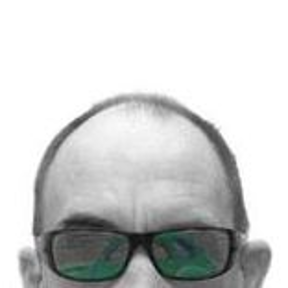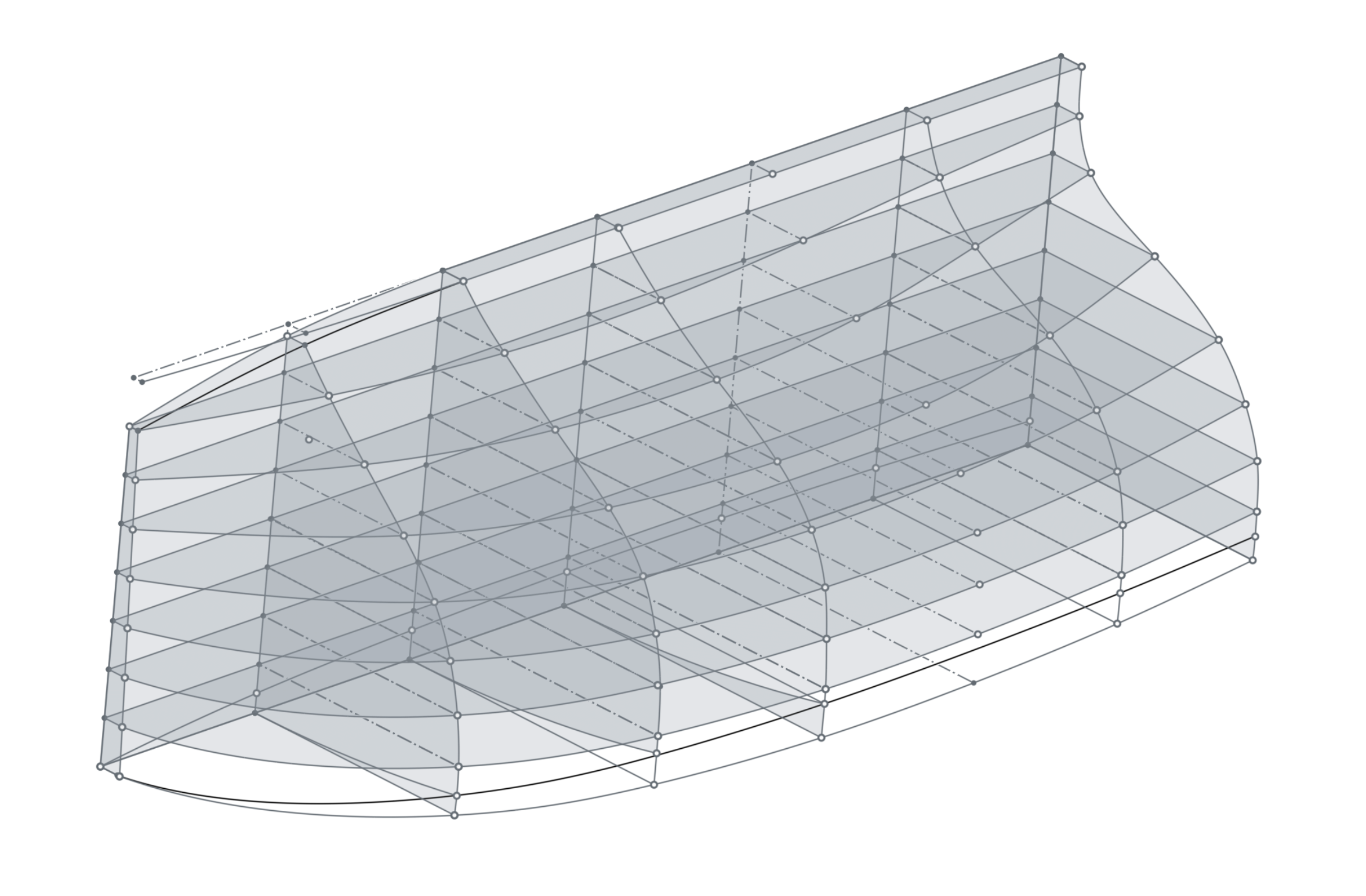Welcome to the Onshape forum! Ask questions and join in the discussions about everything Onshape.
First time visiting? Here are some places to start:- Looking for a certain topic? Check out the categories filter or use Search (upper right).
- Need support? Ask a question to our Community Support category.
- Please submit support tickets for bugs but you can request improvements in the Product Feedback category.
- Be respectful, on topic and if you see a problem, Flag it.
If you would like to contact our Community Manager personally, feel free to send a private message or an email.
Help with a loft please.
 bitingmidge
Member Posts: 13 ✭
bitingmidge
Member Posts: 13 ✭
Hi, I really don't get the concepts of lofts mostly! As soon as they get a bit complex I spend days trying to figure out what went wrong!

This time, I'm only a day in so thought I would put up my hand. I am working on a measured drawing of an historical boat model from the original (shipwright's) loft.
I effectively have a wire frame (I apologise for the size of the image!) that's complete except for one or two points which are microscopically misaligned and I'm doing my best to track them down. Even so, a loft should work between two or three frames, perhaps with the waterlines as guides, shouldn't it?
I'd really appreciate some advice as to how to go about troubleshooting, and giving me a direction to head in!
Thanks!

0
Best Answers
-
 MichaelPascoe
Member Posts: 2,703 PRO
MichaelPascoe
Member Posts: 2,703 PRO
Each sketch guide must pierce the loft profiles exactly. Usually, I use the Pierce constraint for this. If the guide is not touching the profile exactly, it will fail the loft. This is a tedious process to learn, but once you learn how to constrain these sketches, your lofts will not fail in this way.
Learn more about the Gospel of Christ ( Here )
CADSharp - We make custom features and integrated Onshape apps! Learn How to FeatureScript Here 🔴1 -
 S1mon
Member Posts: 3,796 PRO
As @MichaelPascoe points out, there are many places where pierce relationships are needed. After fixing the end points of the "Profile Transom 12in" with pierce relationships, I was able to create a fill surface. I could use the various waterline and profile curves as guides, but it ends up being a very lumpy surface.
S1mon
Member Posts: 3,796 PRO
As @MichaelPascoe points out, there are many places where pierce relationships are needed. After fixing the end points of the "Profile Transom 12in" with pierce relationships, I was able to create a fill surface. I could use the various waterline and profile curves as guides, but it ends up being a very lumpy surface.
Unfortunately, the standard spline is a terrible tool for doing this kind of surfacing. I would highly recommend using Béziers.
Here's the curvature plots of the waterlines:
Here are the profile curvatures (with all the sketches hidden):
The basic splines are curvature continuous internally, and with a ton of careful tweaking you might be able to create something that's not so lumpy, and with out the random negative curvatures, but starting with Béziers, will be way easier.
Here's an example of Profile 10inch:

It will be more complicated to make every profile and waterline intersect at every cross curve perfectly with a bunch of independent Béziers, but you might be better off with lofting or filling a surface with fewer internal guides. In my redrawing of Profile 10inch, I only aligned the end points and approximated the internal points.
It may be cleaner to only have one or two internal waterlines and use all the profiles. Or perhaps, use all the waterlines, and only one or two internal profiles. In general you want to use as few constraints as possible to get the cleanest surface possible. The more dense (and imperfect) the guides, the lumpier it will be.
Also, from the size of the model, it looks like this is literally a model boat, not a full size reproduction, so more than likely there will be a lot of hand sanding/finishing. To some degree, you could ignore a bunch of this if you're going to clean things up manually in the real world.
Simon Gatrall | Product Development Specialist | Open For Work
0
Answers
My first thought is that all of the sections you’re using might not be intersecting everywhere. Perhaps a fill surface with all the interior stuff set as guides with “precise” unchecked would give you a cleaner surface.
Simon Gatrall | Product Development Specialist | Open For Work
Those sketches look very clean. We can get that to loft for you.
@S1mon has the best approach, surfaces will be the way to go on this. Either Loft or Fill one side at a time: left, front, right, back, top, bottom. Then use the Enclose tool to enclose all of the surfaces. If you get stuck, or want more detailed help, share a link and make the document public.
Or, you could do a solid loft, but this will require a careful selection of guides and connections.
Learn more about the Gospel of Christ ( Here )
CADSharp - We make custom features and integrated Onshape apps! Learn How to FeatureScript Here 🔴
https://appstore.onshape.com/apps/Design & Documentation/BI4NF3BZAEQXBXOERCYO6NSHJ5Z62TB6ZI472VA=/description
Or this featurescript
https://cad.onshape.com/documents/b8730d44070bc0466ad80444/w/b111d39908fbb971f1521124/e/4d25c05bc32c9ea6f74209d6
Simon Gatrall | Product Development Specialist | Open For Work
Regards!
Each sketch guide must pierce the loft profiles exactly. Usually, I use the Pierce constraint for this. If the guide is not touching the profile exactly, it will fail the loft. This is a tedious process to learn, but once you learn how to constrain these sketches, your lofts will not fail in this way.
Learn more about the Gospel of Christ ( Here )
CADSharp - We make custom features and integrated Onshape apps! Learn How to FeatureScript Here 🔴
Unfortunately, the standard spline is a terrible tool for doing this kind of surfacing. I would highly recommend using Béziers.
Here's the curvature plots of the waterlines:
Here are the profile curvatures (with all the sketches hidden):
The basic splines are curvature continuous internally, and with a ton of careful tweaking you might be able to create something that's not so lumpy, and with out the random negative curvatures, but starting with Béziers, will be way easier.
Here's an example of Profile 10inch:
It will be more complicated to make every profile and waterline intersect at every cross curve perfectly with a bunch of independent Béziers, but you might be better off with lofting or filling a surface with fewer internal guides. In my redrawing of Profile 10inch, I only aligned the end points and approximated the internal points.
It may be cleaner to only have one or two internal waterlines and use all the profiles. Or perhaps, use all the waterlines, and only one or two internal profiles. In general you want to use as few constraints as possible to get the cleanest surface possible. The more dense (and imperfect) the guides, the lumpier it will be.
Also, from the size of the model, it looks like this is literally a model boat, not a full size reproduction, so more than likely there will be a lot of hand sanding/finishing. To some degree, you could ignore a bunch of this if you're going to clean things up manually in the real world.
Simon Gatrall | Product Development Specialist | Open For Work
Simon Gatrall | Product Development Specialist | Open For Work
It's teaching me patience!